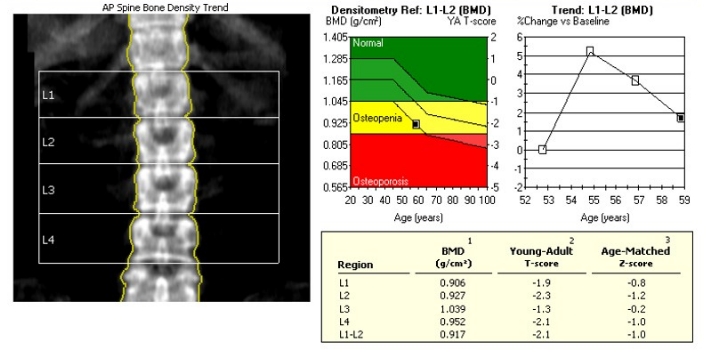Bone density scanning, also called dual-energy x-ray absorptiometry (DXA) or bone densitometry, is an enhanced form of x-ray technology that is used to measure bone loss and to predict risk of bone fracture. DXA is most often performed on the lower spine and hips. Many national guidelines recommend testing all women age 65 and over. Depending on clinical risk factors, testing in men or postmenopausal women can also be considered.
On the day of the exam, you may eat normally. You should not take calcium supplements for at least 24 hours before your exam. You should wear loose, comfortable clothing, avoiding garments that have zippers, belts, or buttons made of metal. You may be asked to wear a gown during the procedure. You will be asked to remove keys and jewelry in the area being scanned.Women should always inform their physicians and the technologist if there is any possibility of pregnancy.
You will be comfortably positioned on the examination table by a technologist. A scanning detector above you will slowly move while low dose x-rays are being used to produce an image of your lower spine and hip. The examination is typically completed in about 15 minutes.
(212) 219 - 9135







